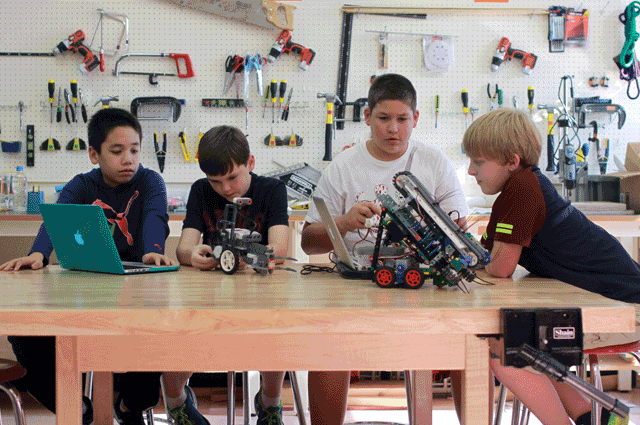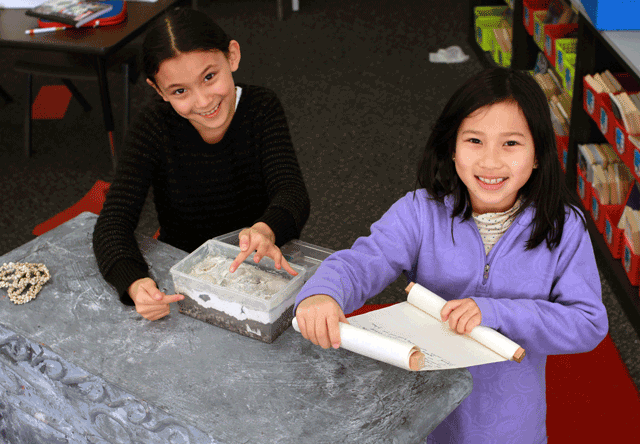At The American School in Japan, students learn how thinking like a designer can help solve problems in a variety of subjects.
When we hear the word “design,” we are more likely to begin thinking about the keen lines of a new smartphone or a captivating website than we are a new way of looking at the learning process.
However, if you stop to consider the reasons why a phone’s curves seem to rest perfectly in your hand, or start to think about the decisions behind a site being laid out the way it is, you quickly come to understand that any design choice involves asking many questions—who will be using this? What are his or her needs? What are the possible difficulties they might encounter when using a given design?—before the first model is even made. And since no project can ever be perfect from the beginning, the design process is one that demands multiple “failures,” each one pointing to an aspect that still needs to be improved.
“Design Thinking,” then, is an approach that combines open-minded creativity with refinement and intellectual rigor, and as students at The American School in Japan continue to demonstrate, it is a mindset that can be used in a variety of subjects, from the arts to formal scientific disciplines. Students take a compulsory Creative Design class in sixth grade—from August compulsory seventh and ninth grade courses will be added—and they have a wealth of resources at hand with which they can make, build, and create, including several 3D printers, a 3D scanner, and small, programmable computers known as Raspberry Pis, in addition to Lego Mindstorm and VEX robotics kits.
Before students in the higher grades begin printing their own 3D shapes in the design labs or programming robots to do battle in friendly competition, they have already learned in the early grades how to “think like designers.” For example, in December, elementary school students joined in on the worldwide Hour of Code project, where activities ranged from programming small robots to developing more complicated software projects on their iPads.
But it was walking in on a fourth grade class and back into ancient history that showed just how flexible—and powerful—Design Thinking could be. The fourth graders had been studying ancient civilizations and the various inventions that those societies had developed, and as their final project for the unit, they were tasked with trying to “reverse engineer” one of those technologies, without any assistance. For example, one had chosen the Roman road system, another was studying the architecture of the Roman Empire’s most famous buildings, and another pair was looking at the basic building material that made all of these possible: cement.
As the pair explained the process they went through in order to try to recreate this ancient technology, the crucial elements of Design Thinking could be seen very clearly: immersion, brainstorming, collaboration, prototyping, synthesis, and reflection. And the students were the first to admit that even after several different attempts, with different materials, and different mixtures, they weren’t able to recreate the cement perfectly. But in the process, they were forced to think for themselves and work together in order to improve upon their previous attempts, reflecting after each step.
Design Thinking is an approach to learning that encourages curiosity and imagination, but consistently requires that the products of that creativity be tested at each stage. And at each stage of their learning experience at ASIJ, students are inspired to design their own problem-solving approaches that will prepare them for university life and the challenges that lie beyond.
For more information about The American School in Japan, please visit www.asij.ac.jp










